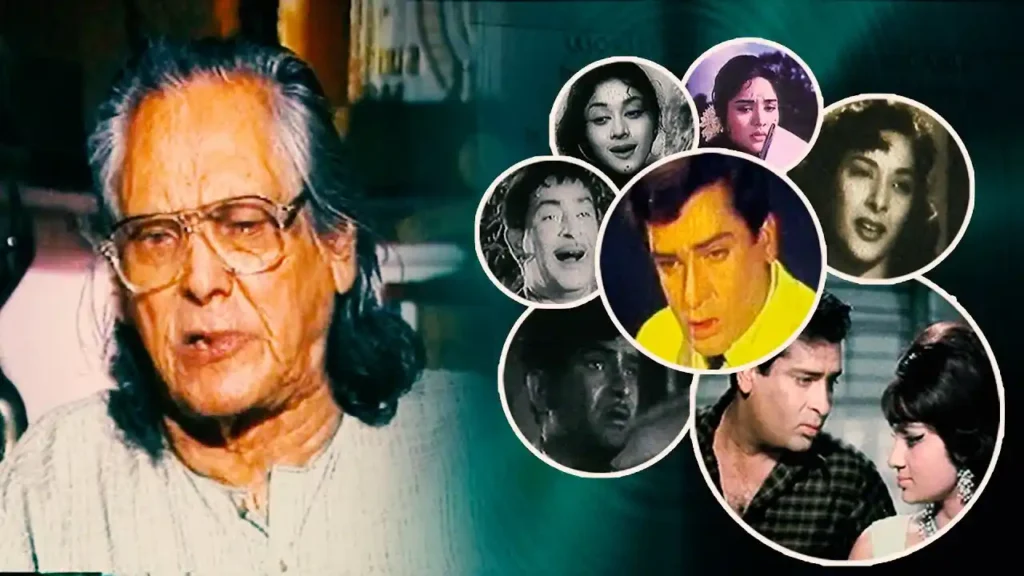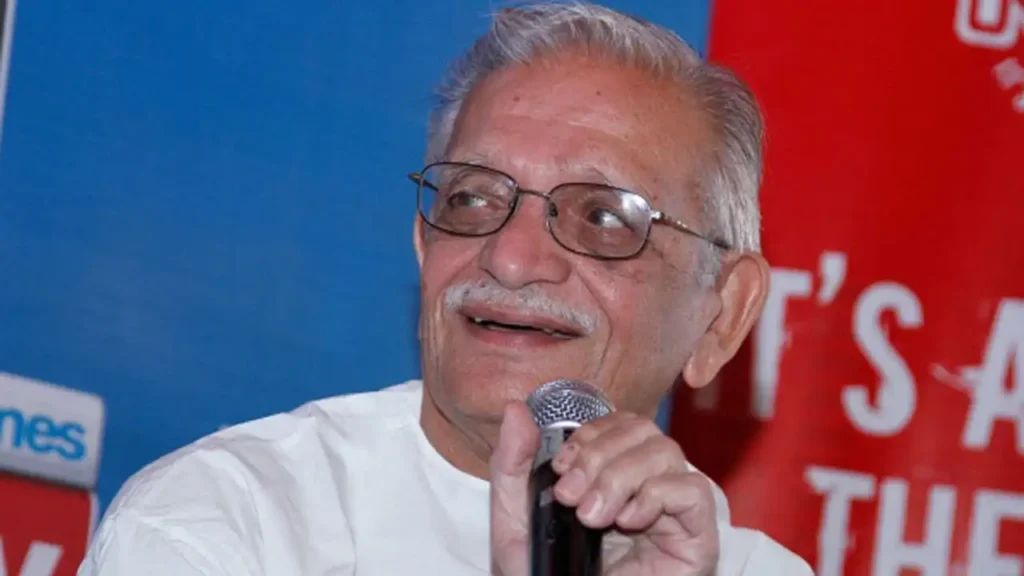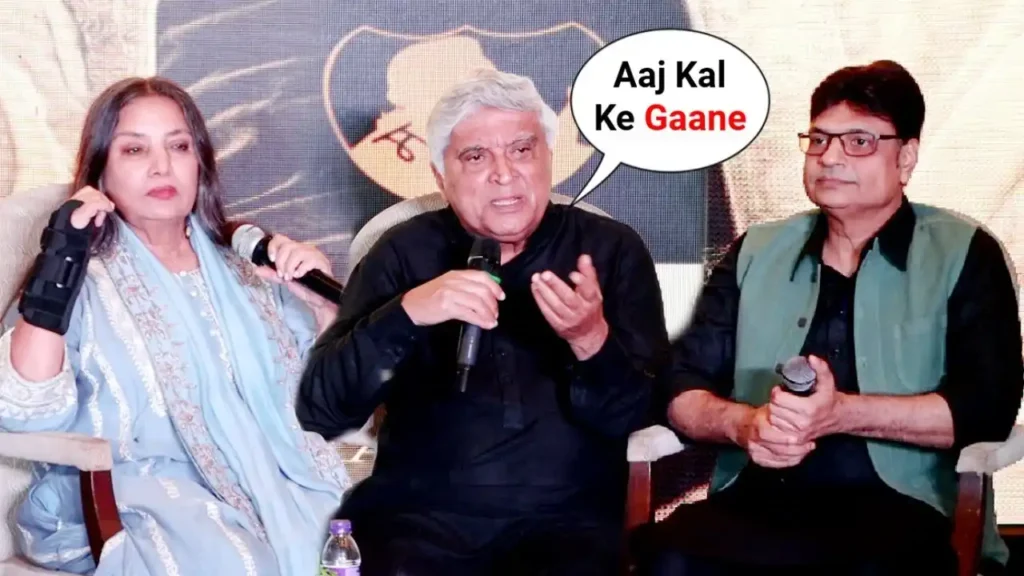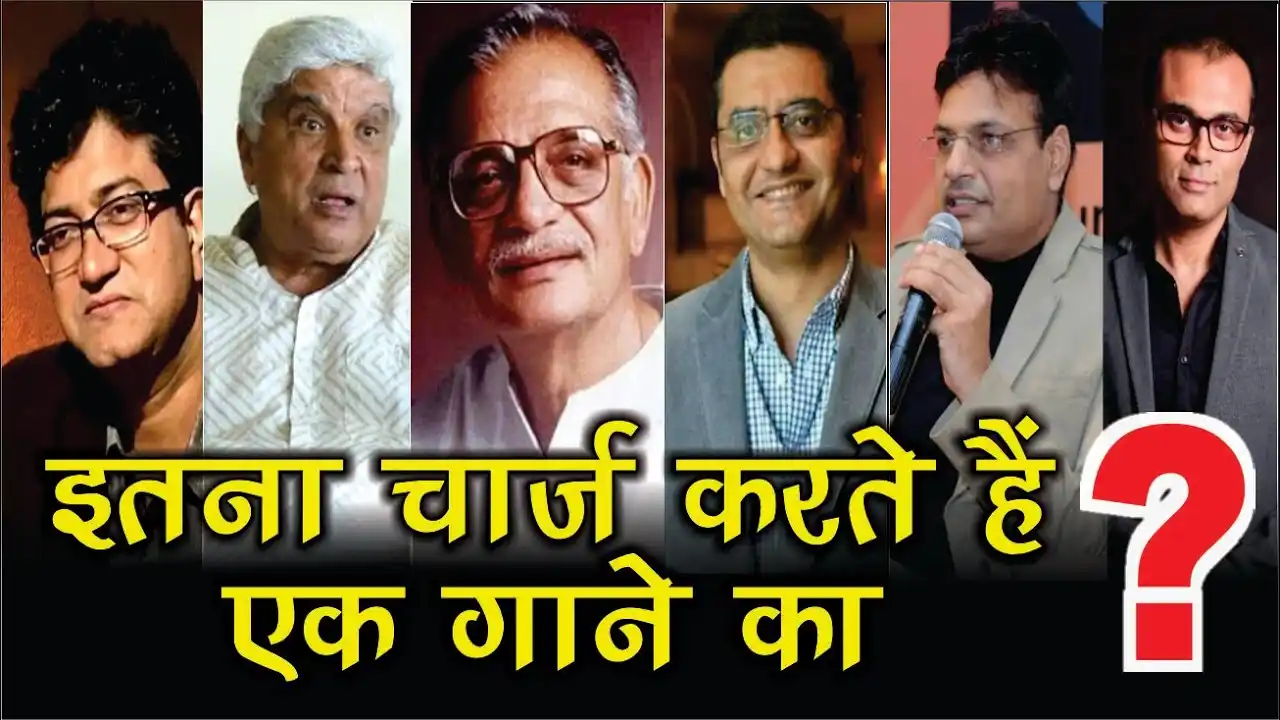Ever wonder why Indian film music has such a huge impact on our lives? In addition to their catchy melodies and stunning visuals, the song itself often hits us hard. They weave stories of love, loss, joy and sorrow that mirror our own experiences and emotions. But how has Indian cinema evolved over time? Let’s embark on a musical journey to explore the fascinating changes that have taken place in this art of film.
The Music of Early Indian Cinema: A Journey Through Timeless Music
Have you ever wondered about the exciting music that accompanies Indian silent films? Before dialogue, music played an important role in storytelling, setting mood and enhancing visual experience. Let’s start with the Indian musical influences, the themes and ideas that graced the early musicals, and the legendary lyricists who shaped the musical landscape of Indian cinema.
Indian traditional musical influences
India’s rich and varied musical heritage served as a foundation for early film music. Classical Indian music, including Hindustani classical music and Carnatic music, infused the films with intricate ragas, rhythms and soulful melodies. It also contributed greatly to the shaping of folk songs with early regional rhythms and simple but powerful melodies.
Themes and ideas in early music
Songs in early Indian films often revolved around timeless themes like love, loss, desire and longing. Poets and songwriters drew inspiration from classic literature, mythology and everyday life to create music that resonated with audiences. The intense look included natural beauty, timelessness, and the enduring power of human emotion.
Famous composers and their contributions
Many legendary lyricists left an indelible mark on the early days of Indian cinema. Known for his patriotic and soulful songs, Pradeep penned timeless hits like “Aye Mere Watan Ke Logon“. Sahir Ludhianvi’s poignant and philosophical words as heard in films like “Pyaasa” and “Kabuliwala” touched the hearts of millions. Another popular lyricist Shailendra wrote catchy and memorable songs that became hits.
The early days of Indian cinema are beautifully combined with traditional Indian music and cinematic storytelling. With captivating music and moving lyrics, these films captured the essence of love, loss and human emotions. The contributions of legendary songwriters inspire and entertain listeners today, reminding us of the timeless power of music.
The Golden Age of Hindi Film Music: A Musical Journey
Have you ever wondered about the magic behind the timeless songs of Hindi films of the 1950s and 1960s? Often referred to as the Golden Age, this era saw a unique confluence of talents as we delve into the world of songwriters like Shailendra and Hasrat Jaipuri who created some of the most iconic music in Indian music history and explore themes and influences which shaped their projects.
Musical Gurus: Shailendra, Hasrat Jaipuri and others

During the golden age, Shailendra and Hasrat Jaipuri were leading names in Hindi film music writing. Their ability to weave words into captivating and deeply emotional forms sets them apart. Shailendra’s songs often explore love, loss and social issues, Hasrat Jaipuri’s poetic style and philosophical musings added a unique depth to his music
Other notable lyricists of that era were Majrooh Sultanpuri, Anand Bakshi and Sahir Ludhianvi, each with their own unique style and contribution to Hindi film music with rich tapestry often soulful melodies of songs composers like Naushad, Shankar Jaikishan and RD Burman.
Themes of love, loss, social issues
The golden age of Hindi film music explored a variety of themes in spectacular fashion, with love and loss being the most prevalent. Songwriters used their craft to express complex human emotions, from the joy of love to the pain of separation. The songs often depicted the struggles and triumphs of individuals going through difficult relationships.
Besides the loss of love, Hindi film lyricists also dealt with the social issues of their time. They used their platform to raise awareness about issues such as poverty, inequality and the plight of marginalized communities. Songs like “Hum Chale Hain Yahan Se” and “Aaj Phir Jeene Ki Tamanna Hai” tackled life’s anxieties with emotion and power.
Influence of classical music and poetry
Golden Age composers drew inspiration from a variety of sources, including classical music and poetry. The rich tradition of Indian classical music provided the basis for the rhythm and rhythm of Hindi film music. Composers often incorporated classical and rhythmic elements into their compositions, adding depth and sophistication to the music.
Furthermore, poetic influences were evident in the style and imagery employed by many of the composers. Poetic devices such as similes, metaphors and allegories were often used to create vivid and persuasive descriptions. The fusion of classical music and poetry resulted in a unique artistic hybrid that captivated audiences.
The golden age of Hindi film music was a remarkable period that produced some of the most enduring musical favorites in Indian history. Songwriters such as Shailendra and Hasrat Jaipuri played a key role in the formation of this era and in their ability to communicate.
70s-80s: The New Wave in Indian Music
Remember those groovy beats, catchy melodies and catchy lyrics in Indian music in the 70s and 80s? It was a time of experimentation, innovation and the rise of new genres that captured the hearts of millions. Let’s dive into the golden age of Indian music and examine the changes that took place that shaped the industry.
Atrial disc
The disco era swept the globe, and India was no exception. Infectious music, stylish costumes and energetic dancing captivated audiences of all ages. Disco music introduced a new sound to Indian music, blending Western influences with traditional Indian music. Popular disco songs like “Dum Maro Dum” and “Yeh Shaam Mastani” became instant hits, setting the dance floor on fire.
Pop music occupies the main stage
Pop music with catchy melodies and lyrics became very popular in the 70s and 80s. Singers like Kishore Kumar, Asha Bhosle and Lata Mangeshkar delivered unforgettable pop songs that touched the crowd. From romantic melodies to upbeat dance numbers, pop music offered a variety of sounds suitable for a variety of tastes.
Rise of Anandabakshi and Gulzar

The 70s and 80s lyrics were as catchy as the music. Lyricists like Anand Bakshi and Gulzar played an important role in shaping the narrative of Indian music. Their poetic and evocative vocals added depth and emotion to the songs, making them relatable and memorable. Bakshi’s romantic and soulful lyrics, combined with Gulzar’s intimate and evocative verses, had a profound impact on Indian music
Languages used
The 70s and 80s saw an increase in the number of languages used. Composers and songwriters dared to break free from traditional conventions, explore new genres and incorporate languages. Unique and innovative music emerged from this experiment that defied categories.
The 70s and 80s were the golden age of Indian music, with disco and pop influences, multilingualism and the rise of the genius of songwriters like Anand Bakshi and Gulzar.
90s: A mix of old and new
New genres: rap, rock, and beyond
The 1990s saw a musical revolution, with new genres emerging and mixing old and new sounds. Rap was one of the main genres of this era. With its rhythms and loud lyrics, rap music quickly became popular and became a cultural phenomenon. Tupac Shakur, Biggie Smalls, Dr. Artists like Dre dominated the airwaves with socially conscious and often controversial songs.
Another genre that flourished in the 1990s was rock. While rock was a mainstay of popular culture for decades, the 90s saw a resurgence of interest in the genre, with bands like Nirvana, Pearl Jam and Soundgarden leading the charge into with their grunge-inspired sound, with distorted guitars and fury-filled lyrics It has reverberated with generations
In addition to rap and rock, the 90s saw the rise of other new genres, such as alternative rock, hip-hop, and dance music. These genres often blended genres, creating unique, unique sounds that appealed to a wide range of listeners.
Western musical influences
In the 1990s, when music was new, the influence of Western music continued to grow stronger. Western singers like Michael Jackson, Madonna and Whitney Houston dominated their music scene and their songs became very popular in India. However, Indian musicians also began to incorporate Western influences into their work, creating a hybrid of traditional and modern sounds.
Lyricists like Javed Akhtar and Irshad Kamil

The 1990s also witnessed a new generation of songwriters, who could write songs that touched listeners in deep emotional ways Javed Akhtar and Irshad Kamil were two of the leading lyricists of that era. Their songs often explored love, loss, and social issues, and their songs were known for their depth and poetry.
The 1990s was the golden age of Indian music, with the emergence of new genres, the fusion of old and new sounds, and the emergence of brilliant songwriters The music of this era is consumed by music lovers all over the world is always celebrated and enjoyed.
The Sound of a New Age: How Songwriters Capture the Spirit of Modernity
How the lyrics of your favorite songs reflect the times in which we live? In a 21st century world shaped by globalization and digital media, music has become a powerful tool for expressing the zeitgeist. Songwriters like Amitabh Bhattacharya and Prashant Singh are at the forefront of this category, creating music that captures modernity, consumerism and social change in particular
The impact of globalization and digital media
Globalization has connected the world in unprecedented ways, creating a cultural shift that has impacted music worldwide. Digital media has further accelerated this process, making it easier for artists and audiences to cross borders. Songwriters responded to these trends by exploring issues of identity, membership, and the complexities of living in a globalized world.
Issues of modernity, consumerism, and social change
Modernity is a major defining feature of the 21st century, characterized by rapid technological advancement, urbanization, and the erosion of traditional values The songwriters captured the spirit of modernity through issues such as climate change , tackling inequality and the digital divide. Consumerism driven by economic growth and commerce is another common theme in contemporary music. Songwriters often rail against the overwhelming consumer culture and its impact on society.
Amitabh Bhattacharya and Prashant Singh: Modern Poets
Amitabh Bhattacharya and Prashant Singh are two of the most influential lyricists in the Indian music industry today. Their work reflects the challenges of modern life and explores themes of love, loss and the search for meaning. While Bhattacharya’s songs are known for their poetic depth and evocative imagery, Singh’s songs tend to touch on social and political issues.
The lyrics of Amitabh Bhattacharya, Prashant Singh, and other contemporary lyricists offer a unique perspective on the world we live in. Exploring themes of modernity, consumerism and social change, they capture and resonate with the spirit of our times 21 Shatabdi ma. As we continue to navigate the challenges and opportunities of this new era, there is no doubt that music remains an important source of inspiration and expression.
The evolution of Indian film music is a journey through time
Impact of social and political change
Indian film music has always reflected the socio-political aspects of the country. From the pre-independence fervor of patriotism to the romantic songs of the post-independence years, music has played an important role in shaping the country’s cultural identity
- Social Changes: The changing dynamics of Indian society have greatly influenced the lyrics and style of film music. For example, the portrayal of women has evolved over time. In the early days of Indian cinema, women were often portrayed as damsels in distress. However, as society progressed, women began to be portrayed in more empowered roles, leading to a corresponding shift in film music lyrics.
- Political changes: Political events and movements influenced Indian film music lyrics. The independence struggle, for example, inspired patriotic songs that mobilized the nation against colonial rule. Similarly, the social and political upheavals of the 1960s and 1970s produced protest songs on issues such as poverty, inequality and social injustice.
Impact of technological progress
Technological progress plays an important role in sound production and Indian film music. The introduction of new recording equipment and software has allowed conductors to experiment with different sounds. Furthermore, the widespread availability of digital music has made it easier for listeners to explore and appreciate a wider range of genres.
Technological innovations: The emergence of film machines and drum machines in the 1980s and 1990s changed the soundtrack of Indian film music. This technology enabled music directors to create complex and innovative programs that were previously impossible. In recent years, the use of digital audio workstations (DAWs) has democratized music production, enabling independent artists and musicians to produce high-quality recordings
Global impact
The globalization of the world economy and culture has had a profound impact on Indian film music. The increased exposure to western music led to the blending of Indian classical music with western genres such as rock, pop and hip-hop. This blend created a unique and unique sound that captured the attention of audiences around the world.
Cultural Exchange: The exchange of cultural influences between India and other countries has also contributed to Indian film music. The popularity of Bollywood music in the international market has led to collaborations with western artistes and incorporation of foreign elements into Indian music.
Role of conductor and composer
Music directors and composers play an important role in shaping the lyrics and musical style of Indian film music. They collaborate with songwriters to create songs that are not only interesting but meaningful and relevant to the story being told.
- Creative vision: The creative vision of a music director or composer can greatly influence the overall sound quality of a film. By choosing the right music, harmonies and sound effects, the emotional impact of the film’s story can be enhanced.
- Collaboration: The relationship between directors and songwriters is essential to creating memorable music. By working together, they can ensure that the song complements the music and conveys the intended message to the audience.
In conclusion, the lyrical content of Indian film music has evolved significantly over time, reflecting the changing social, political and cultural landscape of the country , revealing dreams and challenges.
The future of Indian film music lyrics: A balancing act
Indian cinema has always been a reflection of the country’s culture, society and politics. Its songs, especially the lyrics, play an important role in shaping the collective consciousness of the nation. However, the changing times have brought significant challenges and opportunities to the Indian film scene.
A balance of tradition and modernity
Indian music has a rich heritage, with classical, folk and regional music heavily influenced by film music. While maintaining these traditions is important, the industry must also adapt to the changing tastes of today’s audiences. Often this means incorporating elements of Western music, rap, and electronic music into traditional song structures. A balance between tradition and modernity is needed to ensure that Indian film music remains relevant and appealing to a diverse audience.
Fighting censorship and cultural sensitivity
The Indian film industry operates in a complex regulatory framework, where censorship boards and cultural sensitivity play an important role. While censorship can sometimes be necessary to protect public morals, it can stifle creativity and stifle artistic expression. Songwriters often face challenges in navigating these boundaries, as they strive to create music that is engaging and acceptable to audiences.
The Future Of Indian Cinema Song Lyrics
The future of Indian film music is full of promise and uncertainty. On the one hand, the project has the potential to continue to produce incredible music that speaks to listeners for generations to come. On the other hand, it faces the challenges of appealing to audiences, technological advances and regulatory pressures.
For a bright future for Indian film music, it is imperative that:
Encourage experimentation: Songwriters should be encouraged to explore new genres and styles, without compromising the core values of Indian music.
- Respect cultural sensitivity: While pushing boundaries is important, it is equally important to respect cultural sensitivity and avoid offending the audience.
- Embrace technology: Technology can be used to improve the production and distribution of music, making it accessible to a wider audience.
- Encourage collaboration: Collaborations between established and up-and-coming musicians can lead to new ideas and new songwriting styles.
By meeting these challenges and seizing opportunities, the Indian film industry can continue to create timeless music that enriches the lives of millions around the world.
Highlights of Indian musical lyrics
- The future of Indian film music is a delicate balance between preserving tradition and embracing modernity.
- Censorship and cultural sensitivities pose tremendous challenges for songwriters.
- The business must adapt to changing audience tastes and technological advances.
Importance Indian Cinema Song Song
Indian film music has played an important role in shaping the country’s cultural identity. It became a source of entertainment, inspiration and social commentary for them. The songs are very reflective of Indian aspirations, struggles and triumphs.
- Global reach: Indian film music has the potential to gain global recognition, as it is already popular in different parts of the world.
- Technological innovation: Artificial intelligence and virtual reality can transform the way music is created and experienced.
- Social Impact: Music can continue to be powerful tools for social change, raising awareness of important issues and inspiring action.
As the Indian film industry evolves, so will its music. Meeting challenges and seizing opportunities, Indian cinema stories can captivate audiences and enhance the cultural landscape for generations to come.




